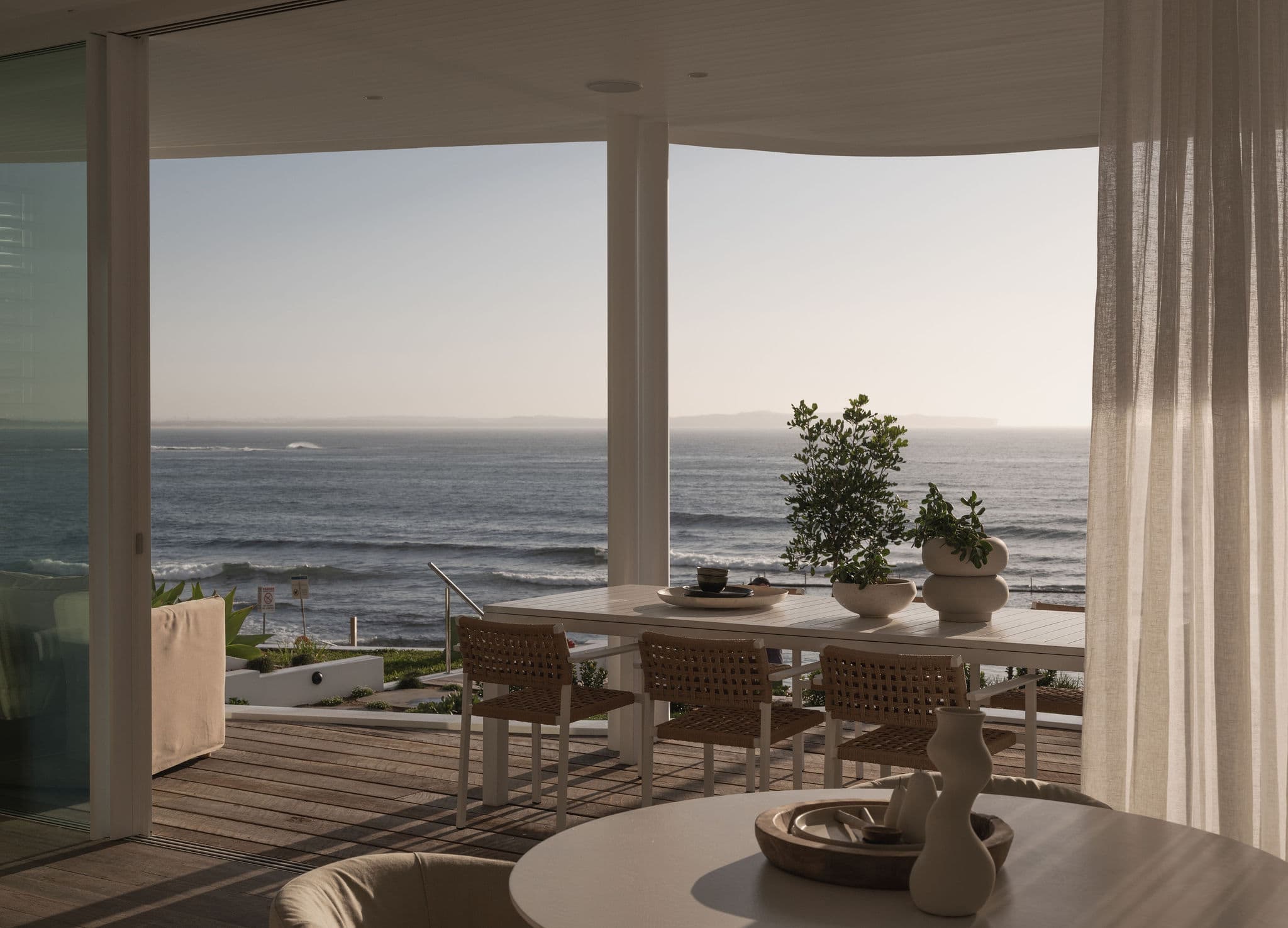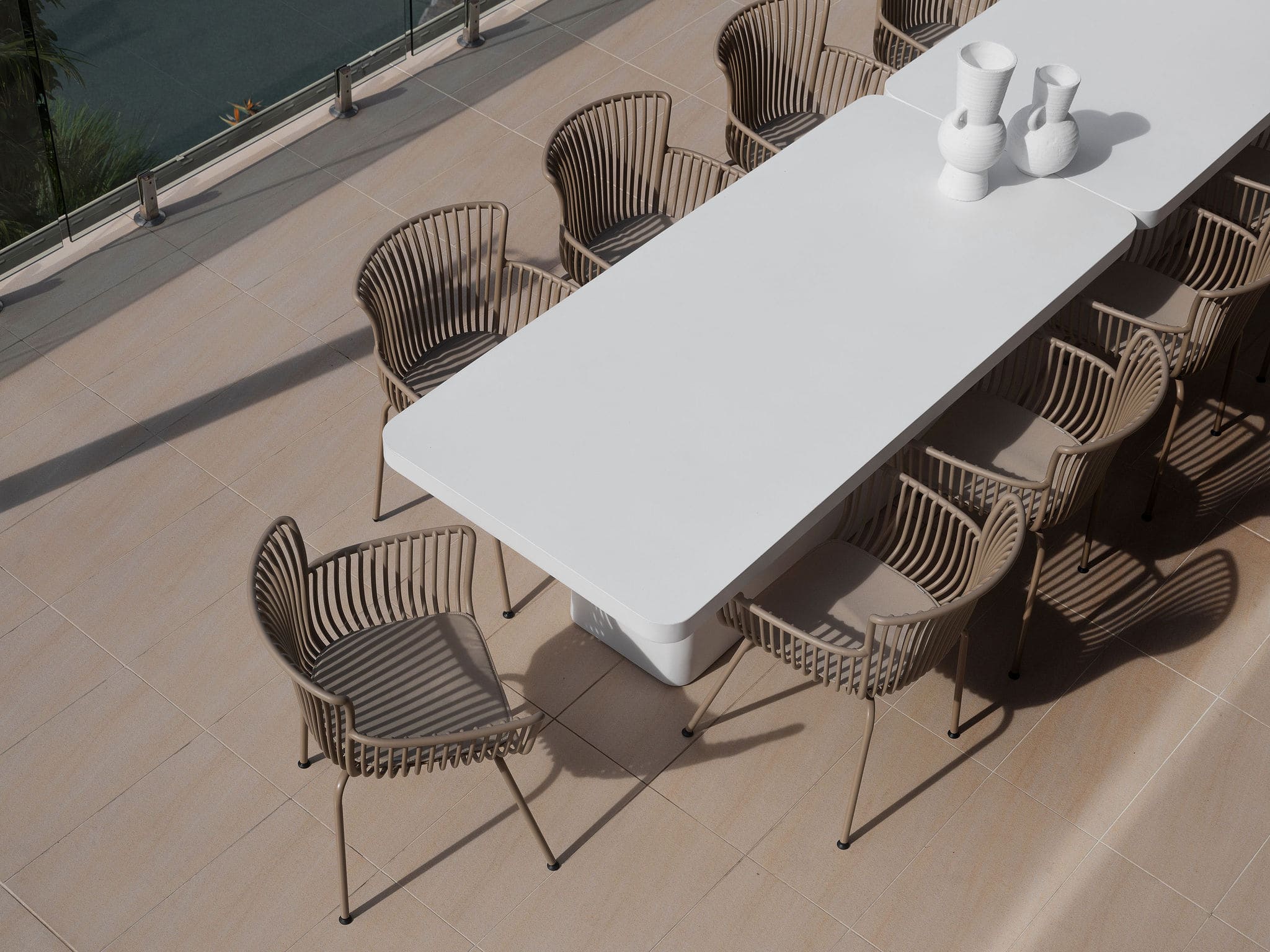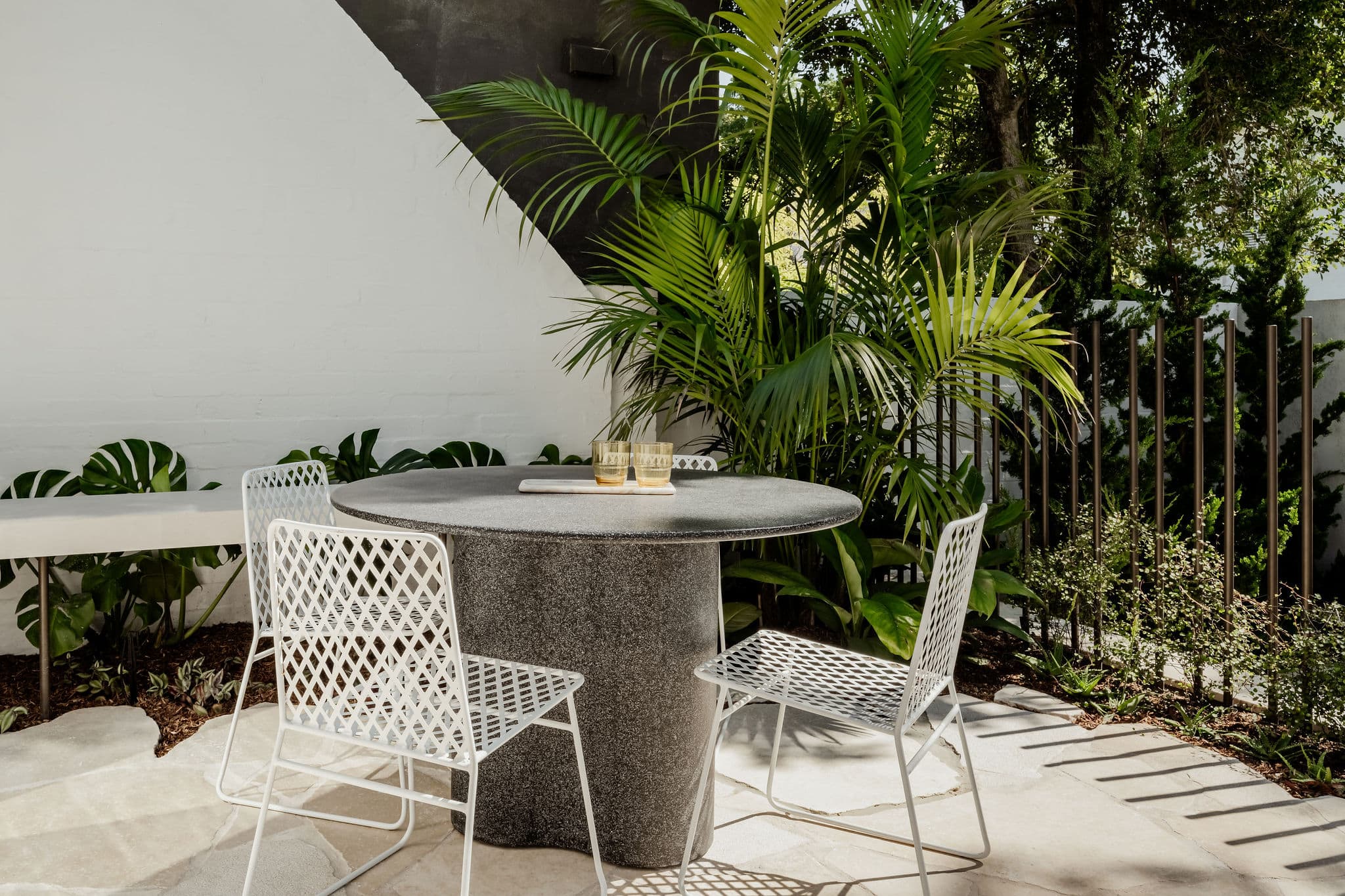Outdoor Furniture: The Do’s and Don’ts
Outdoor furniture is a vital component in crafting a welcoming and functional exterior space. Whether you’re furnishing a deck overlooking the ocean or a cosy inner-city courtyard, there are certain principles that can guide you towards making the best choices. Here, we delve into the essential do’s and don’ts of outdoor furniture, drawing insights from some of our standout projects.
Do: Consider the Environment

When choosing outdoor furniture, it’s crucial to factor in the surrounding environment. For example, in one of our projects, SEA by Sammut, we designed the back deck facing the ocean. We selected a six-seater table set with rattan woven chairs. The natural rattan material complements the coastal setting, and we styled the table with greenery to echo the lush surroundings. This approach not only enhances the aesthetic appeal but also ensures that the furniture blends seamlessly with the natural landscape.
Don’t: Ignore Maintenance Requirements
Outdoor furniture is constantly exposed to the elements, making maintenance a key consideration. Materials like teak, metal, and all-weather wicker are durable and require minimal upkeep, making them excellent choices for outdoor settings. In the SEA by Sammut project, the rattan chairs not only provided a coastal vibe but also offered durability against salty air. Avoid materials that need constant care unless you are prepared for the upkeep.
Do: Prioritise Functionality

Functionality should always be at the forefront of your outdoor furniture decisions. In our Dolans Bay Interior Design project, our clients emphasised their love for outdoor entertaining. To cater to their large family, we selected an eight-seater outdoor table, ensuring ample space for gatherings. This choice reflects the importance of understanding how the space will be used. Large families or frequent entertainers will benefit from expansive, functional pieces that can accommodate their needs.
Don’t: Sacrifice Versatility
Versatility is key, especially in multi-use outdoor spaces. Furniture that can serve multiple purposes or be easily rearranged offers greater flexibility. For instance, modular seating or extendable tables can adapt to different occasions, from intimate gatherings to larger parties. This adaptability is particularly beneficial in spaces like the Dolans Bay backyard, where the family’s needs might change over time.
Do: Embrace Aesthetics

While functionality and durability are crucial, style should never be compromised. Your outdoor space is an extension of your home, and it should reflect your personal taste. In the Paddington project, we styled the outdoor area with an eye for the sophisticated, urban clientele. By choosing sleek, stylish pieces that also catered to practical needs, we created an inviting and chic outdoor environment.
Don’t: Overlook the Space Constraints
Understanding the spatial limitations of your outdoor area is fundamental. In our Paddington project, we were tasked with styling a small courtyard in a terrace house. We opted for a smaller feature table, recognising that the key demographic for this sale included downsizers and inner-city goers. By choosing appropriately sized furniture, we created a versatile space perfect for morning coffees or evening drinks without overcrowding the area. Remember, in compact spaces, less is often more.
Outdoor furniture requires thoughtful consideration of the environment, space constraints, functionality, maintenance, comfort, style, and versatility. The right outdoor furniture can make all the difference.
If you’re looking for design advice, contact us today.